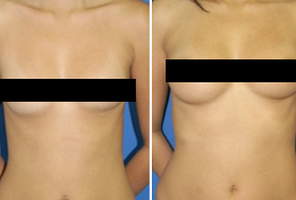What is transilluminated powered phlebectomy (TIPP)?
Treatments for varicose veins vary from noninvasive measures such as exercise and compression hose to surgical removal. Transilluminated powered phlebectomy is a procedure designed to treat varicose veins which arise from dilatation of some of the larger leg veins such as the great saphenous or the femoral veins. Developed with the intension of replacing the older hook phlebectomy and avulsion procedures, transilluminated powered phlebectomy requires less time, fewer incisions, and can be performed under local anesthesia. The result is both a shortening of the time required to perform the vein removal and an improvement in the cosmetic results of the procedure.
What are varicose veins?
Approximately 10% of men and over 30% of women suffer from a condition known as varicose veins. These dilated blood vessels in the lower extremities are the result of damaged valves which allow blood to pool in the feet and legs. While some people with varicose veins only suffer from unsightly bluish purple bulges, others have problems with swelling of the feet and legs, along with a breakdown of the skin known as venous stasis ulcers. Varicose veins are caused by a combination of the increased pressure on these vessels which occurs with prolonged standing or lifting and heredity.
Is transilluminated powered phlebectomy right for me?
Consultation with a physician who performs transilluminated powered phlebectomy is the only way to determine whether this procedure is appropriate for a specific patient. After a thorough history, examination, and duplex doppler (sonogram) studies of the legs, the physician will decide the best procedure for that particular patient. In some cases a combination of procedures will be required to both relieve symptoms and achieve the desired cosmetic result. Since transilluminated powered phlebectomy treats larger varicose veins, smaller veins may need to be treated with different therapies at a different time.
How will I be prepared for TIPP?
Prior to the transilluminated powered phlebectomy procedure the patient is usually asked to walk around to increase the swelling of the veins to be treated. With the patient standing these veins are marked with a surgical pen. These areas will not be as visible with the patient supine. While many patients under go transilluminated powered phlebectomy under only local anesthesia, some will have a combination of both the local and a light general anesthesia.
How is the procedure performed?
The area to be treated is prepared with a surgical scrub solution prior to injecting local anesthesia beneath the skin and around the veins. Two small incisions are needed for each group of veins to be removed. One incision is for the light source to help visualize the veins. The second incision is used for the phlebectomy device to suction and remove the veins. The local anesthetic numbs the area and decreases bleeding from the smaller, previously attached blood vessels.
Working through the two incisions, the physician with the aid of an assistant, will transilluminate or visualize the veins, and then remove them with the powered phlebectomy device. The average time for this procedure is usually half of that required for the hook phlebectomy on the same number of vessels. In addition to shortening the procedure time, transilluminated powered phlebectomy reduces the number and size of the incisions needed.
What is the recovery like?
When the transilluminated powered phlebectomy procedure is completed on one leg, a compression bandage is applied. These bandages will remain for two days. After a short recovery period of one to two hours, the patient is able to walk and is discharged home to return for follow up in two days. When the compression bandage is removed, the patient will need to wear compression hose for up to six weeks for complete healing to occur. Most people are able to return to work within a week as long as prolonged standing and heavy lifting are not involved.
Are there any complications associated with TIPP?
Complications with a transilluminated powered phlebectomy procedure are rare. Bleeding and infection can occur with any procedure of this type. Discoloration of the skin or bruising is common but resolves over a period of a few weeks. Numbness, tingling, and strange skin sensations can also occur since nerves run very close to the vessels to be removed. This also typically resolves over time. One complication that was common with hook phlebectomy was phlebitis or infection of remnants of veins left behind. This is much less common with transilluminated powered phlebectomy since the veins are easier to see and remove.
Is the procedure approved for use in the US?
The transilluminated powered phlebectomy procedure is approved for use in the United States. Cost of the procedure depends on the size and extent of the varicose veins to be treated. Only with an evaluation by a physician who performs these procedures can the cost be determined. Insurance frequently pays for the procedure, but the insurance company may require other measures be tried first such as compression stockings, exercise, and weight loss. For more information interested patients should contact the office of a physician who performs the transilluminated powered phlebectomy procedure.
Disclaimer: This information is intended only as an introduction to this procedure. This information should not be used to determine whether you will have the procedure performed nor does it guarantee results of your elective surgery. Further details regarding surgical standards and procedures should be discussed with your physician.
By OnlineSurgery.com Staff
Updated: October 14, 2009

